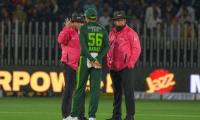LAHORE: With self-sufficient families of the recent past starved of resources and rich grabbing more wealth, social polarisation in Pakistan is rapidly on the rise. Its impact has been compounded by the political polarisation that unfortunately peaked during the turbulent global economy.
Majority of Pakistanis are feeling alienated. They are being looked down at by the few who are playing in wealth. They are being socially excluded.
They now fit into the three dimensions of the social ill-being that starts with the process of alienation and isolation (social exclusion); strained social relations and diminishing social cohesion; and unequal gender relations at the community level.
Food is out of their reach. Imagine the misery of a poor bread earner who even after consuming their entire income on food sees their family half starving. Medical treatment is out of the reach of the poor.
When they go to a government hospital, they know that they will have to wait beyond the expected times not only due to rush, but also because patients who are “higher” in status regularly jump the queue without much fuss.
“Whether we are present on any of the occasions or not present, no one will take notice. When a poor man dies, no one even cares to pay him condolences,” said Abdul Salam who lives in a slum in Ghaziabad.
“I do not visit my friends anymore. If you go to visit them, you have to buy some presents, and how can I afford them? And after that I have to invite them on my turn—how can I afford that as well?” said Sakina Bibi, a widow who works as a washer, washing clothes at different houses. She said despite working from dusk to dawn she does not earn enough to feed her five children.
When one is socially excluded because of poverty, reintegration in the society is only possible when one regains wealth. Such is the lot of the poor! The poor, whose situation is no choice of theirs have no chance of ever being reintegrated into the community. Whereas on the basis of wealth, we see even criminals, like rapists, smugglers, thugs and rent seekers getting respect in society.
Social ill-being can be experienced both collectively and individually. This alienation seems to manifest itself as lack of access to resources, information, opportunities, power and mobility.
It usually overlaps with economic deprivation and is sometimes determined by socio-cultural factors (e.g. traditional social hierarchy, religion, ethnicity, colour, and individual attributes and behaviour that the community considers “deviant”).
Hardship seems to affect communities in two nearly opposite ways. As individuals and households struggle to make ends meet, they have little time for friends and neighbours, or for community activities and concerns that isolate them from society.
At least 20 percent of the population became poor in the recent past, with a subsequent change in the behaviour of affluent families. Generally the types of people who are excluded include the extremely poor, physically disabled (blind, epileptics, people with leprosy), rag pickers, landless persons, low castes, women; unemployed, people living in a particular locality or area known for high rates of crime and violence.
The disabled are invisible, to society and the state. They are confined to their homes, left to cope alone with their problems; they are excluded from society because it demonstrates its alienation virtually everywhere—the high steps in public places, the absence of elevators, inconvenient transport, rutted roads, even polyclinics that have no conveniences for wheelchairs, are some of the systemic ways that maintain exclusivity.
Power generation stood at 8,741 gigawatt-hours or 11,749 megawatts in March
Government is eager to provide an ecosystem to foreign and local IT companies and investors through policymaking
Rupee ended at 278.43 per U.S. dollar, slightly lower from Wednesday’s close of 278.39
Country’s total reserves fell by $68 million to $13.374 billion
Pakistan Stock Exchange's benchmark KSE 100-share Index shed 43.20 points or 0.06 percent to close at 70,290.12 points
Amount of car financing was Rs243 billion in the prior month. In June 2022, these borrowings reached a record high of...







